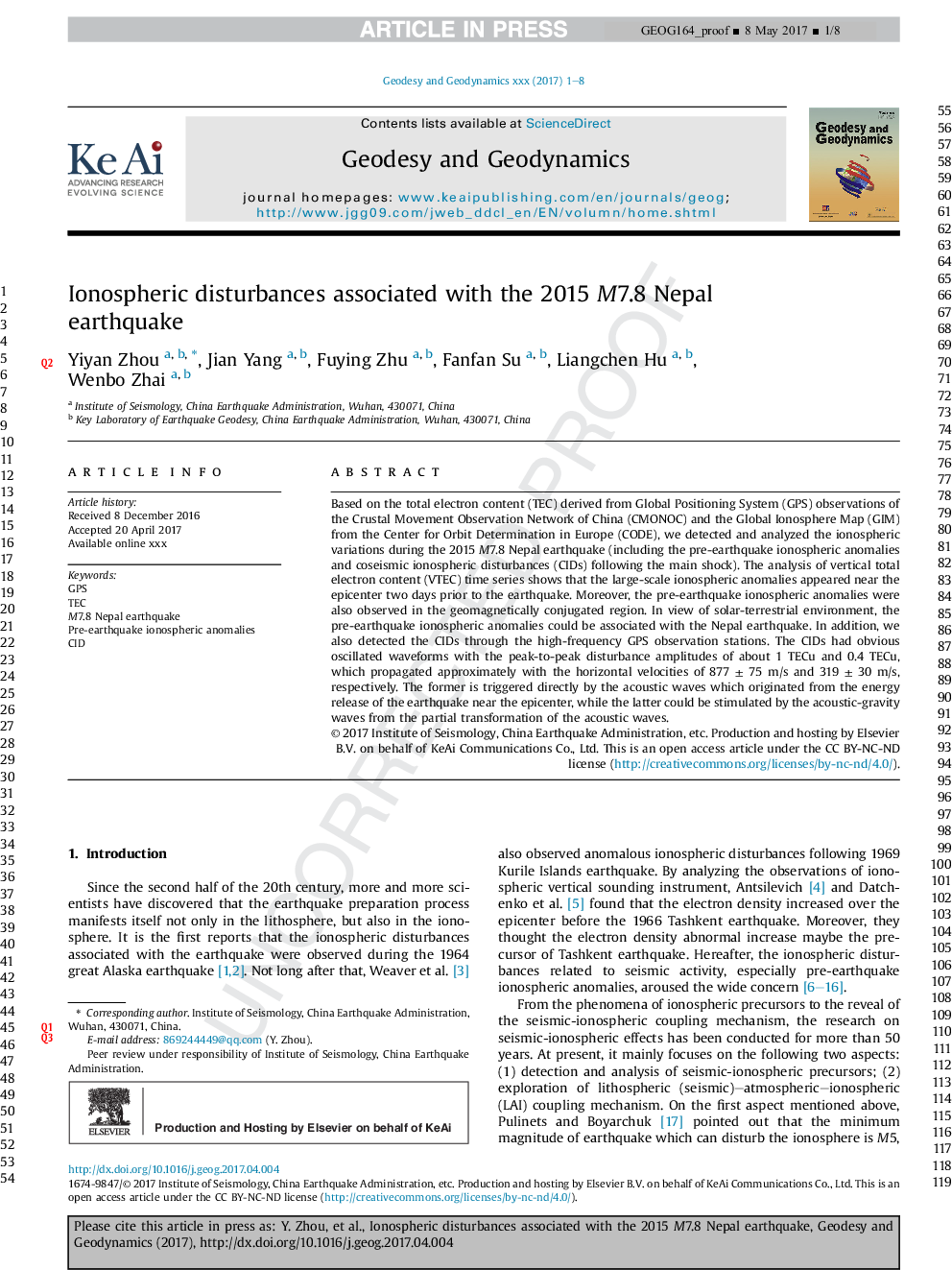| Article ID | Journal | Published Year | Pages | File Type |
|---|---|---|---|---|
| 5780664 | Geodesy and Geodynamics | 2017 | 8 Pages |
Abstract
Based on the total electron content (TEC) derived from Global Positioning System (GPS) observations of the Crustal Movement Observation Network of China (CMONOC) and the Global Ionosphere Map (GIM) from the Center for Orbit Determination in Europe (CODE), we detected and analyzed the ionospheric variations during the 2015 M7.8 Nepal earthquake (including the pre-earthquake ionospheric anomalies and coseismic ionospheric disturbances (CIDs) following the main shock). The analysis of vertical total electron content (VTEC) time series shows that the large-scale ionospheric anomalies appeared near the epicenter two days prior to the earthquake. Moreover, the pre-earthquake ionospheric anomalies were also observed in the geomagnetically conjugated region. In view of solar-terrestrial environment, the pre-earthquake ionospheric anomalies could be associated with the Nepal earthquake. In addition, we also detected the CIDs through the high-frequency GPS observation stations. The CIDs had obvious oscillated waveforms with the peak-to-peak disturbance amplitudes of about 1 TECu and 0.4 TECu, which propagated approximately with the horizontal velocities of 877 ± 75 m/s and 319 ± 30 m/s, respectively. The former is triggered directly by the acoustic waves which originated from the energy release of the earthquake near the epicenter, while the latter could be stimulated by the acoustic-gravity waves from the partial transformation of the acoustic waves.
Related Topics
Physical Sciences and Engineering
Earth and Planetary Sciences
Earth-Surface Processes
Authors
Yiyan Zhou, Jian Yang, Fuying Zhu, Fanfan Su, Liangchen Hu, Wenbo Zhai,
